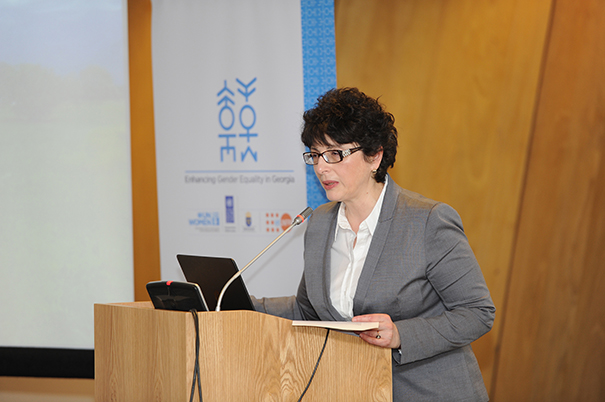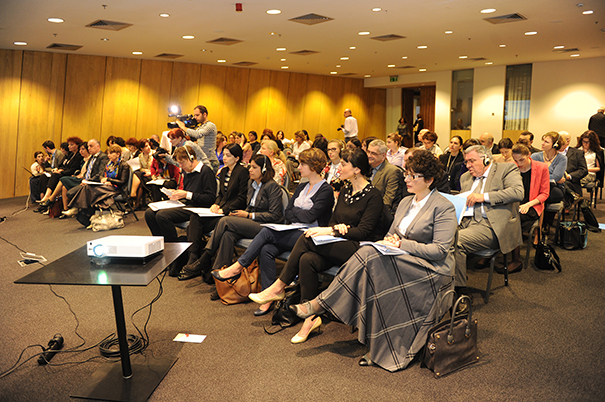On May 4, 2015 a Conference - Gender biased sex selection in Georgia: Context, evidence, implications and proposed solutions - jointly organized by the UNFPA and the World Bank took place today in Tbilisi, Georgia.

“The comprehensive country report for Georgia developed by Prof. Guilmoto in cooperation with GeoStat offers the first systematic inquiry of the long-disputed existence of sex selection in Georgia, leading to a reasonable estimate of the extent of the phenomenon and its variations across the country. Most probably, the main source of change will be the transformation of cultural attitudes resulting in a decline in son preference. The more quickly these transformations in gender discriminatory attitudes take place, the smaller the overall consequences of sex imbalances at birth on Georgia's future demographic structures will be. We hope that the policy recommendations elaborated at the conference will be implemented so that the positive trend observed during the last few years in reducing the sex imbalance is encouraged and sustained”, said Lela Bakradze, Assistant Representative, UNFPA Country Office in Georgia.
“Our study shows how most parents’ wish to have at least one son can add up to a situation where fewer girls than boys are born each year and a situation that is unfavorable to women. And data indicate that Georgia is currently moving away from this imbalance so it is the right time to think of ways in which this trend can be encouraged. This conference gave us a valuable opportunity to come together with stakeholders and reflect on policy lessons that are relevant for Georgia”, said Nistha Sinha, World Bank Senior Economist.
Gender-biased sex selection, manifesting in birth ratios strongly skewed in favor of boys, is an emerging concern in the South Caucasus and recently, evidence and research for these countries is building up. This practice emerged in the South Caucasus after independence in the early 1990s. Amartya Sen famously described this skewed sex ratio as a phenomenon of “missing women” – women who could still be with us if there were no harmful practices that reduced their chance of birth and survival. The issue of “missing women” has received significant attention at the global level in the last few decades, particularly in China, India, and South Korea. The 2012 World Development Report on Gender Equality and Development calculated that each year 3.9 million women under 60 years of age could be considered “missing”. The 2012 UNFPA report on Sex Imbalances at Birth put the number of missing females at 117 million. A small yet significant contribution to this global figure comes from the South Caucasus countries.

The research in the South Caucasus proceeds from growing concern about potential sex imbalances at birth in several East-European countries, following the United Nations interagency statement of 2011 on gender-biased sex selection (OCHR et al. 2011) and the report prepared the same year for the Parliamentary Assembly of the Council of Europe (PACE) on prenatal sex selection in Southeast Europe and in the Caucasus. The studies presented at the conference described the root causes to be parents’ wish to ensure birth of at least one son (“son preference”) which is exacerbated by a trend towards smaller families and economic uncertainties compound this trend. Greater availability of sex-detection technology has enabled many parents to act on this preference for sons.
In Georgia, it had already been estimated that in 2010 about 25,000 girls aged 0-19 years were missing from the country's population owing to the sex imbalances at birth that occurred since the 1990s. During the last years the sex imbalance at birth appears to have begun to reduce. According to the latest figure, it is now below 110 male births per 100 female births, getting closer to the normal ratio.
The participants of the conference, representing key stakeholders, civil society, academia and professional associations, engaged in a dialogue to discuss the recommendations for policy options that address causes of this harmful practice by tackling the root causes. Promising policy approaches consist of fighting against forms of gender inequity within family and society, empowerment of girls and women and advocacy, awareness and education that help raise the value of daughters to become equal to that of sons.


